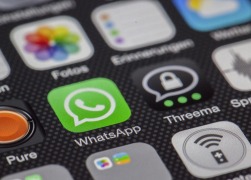Getting started: What is the Internet of Things?

The Internet of Things (or as it’s also known, IoT) isn’t new: tech companies have been discussing the idea for decades, and the first internet-connected toaster was unveiled at a conference in 1989.
At its core, IoT is simple: it’s about connecting devices over the internet, letting them talk to us, to applications, and to each other.
One sector where it’s common is in heating and energy use – partially because many governments are pushing energy companies to roll out smart meters. They have clever functions that let you turn on heating remotely, set it to turn down the temperature if it’s a sunny day, or even turn off when there’s no-one home, says Hannah Irvine, Digital Marketing executive of Verastar.
Some can tell the latter with motion-sensing cameras, or simply by seeing that your smartphone (and therefore you) has left the premises.
Why does it matter?
There’s a reason the government is encouraging energy companies to hand you a smart meter: all that data and automated use is more efficient, meaning we use less energy. Many areas of IoT show such benefits, though some smart gadgets are more about whizz-bang effects than efficiency, which may well be why we’re seeing more smart heating than smart fridges in the UK.
How will the Internet of Things affect business and work?
This all depends on your industry: manufacturing is perhaps the furthest ahead in terms of IoT, as it’s useful for organising tools, machines and people, and tracking where they are. Farmers have also been turning to connected sensors to monitor both crops and cattle, in the hopes of boosting production, efficiency and tracking the health of their herds.
The examples are endless, and all we can predict is that connected devices will likely creep into most businesses, just the way computers and the web have.
Who would moan about a smart tea maker that knows just when you’re in need of a cuppa? We sure wouldn’t.
There has been much hype about IoT and the endless possibilities. However, over the last year there has been a number of hacking attacks in which attackers have exploited the vulnerabilities in the IoT devices, this has seen big websites such as Twitter, Netflix and Spotify being exploited and hacked.
So, what can smaller businesses do to protect themselves we hear you ask? In this article, we explain the growing importance of IoT security and offer our 5 top tips for keeping your business safe.
- Use strong passwords
When setting up new devices, always change the default passwords as these tend to be generic and, therefore, easy for hackers to guess, or use simple software to crack. Never use easy-to-guess passwords such as memorable words (like ‘password’) or names. Make sure any passwords are kept secure and not written down and left in full view for anyone to see
- Software updates
Always make sure that the software or firmware for all your devices is kept up to date. Remember, it’s not just PCs and laptops that need updating, but all devices including routers, servers, network switches and anything else that is connected to your network. Make sure that manufacturer security updates are either installed automatically, or as soon as possible once they become available.
- Protect your business from home networks
If you have employees working for you and they connect work devices to their home networks, then your business data could be at a greater risk. Home networks are usually poorly protected and this provides an easy way onto a business network for hackers.
- Wi- Fi security
Many wireless security methods can be less secure. Check that your wireless setup is WPA2 ( Wi-Fi Protected Access 2) as this is the recommended standard when setting up wireless devices.
- Data backup
Regular and routine data backups are an essential precaution. Data backup and restore is a worthwhile investment for your business and its damage limitation in the event of a disaster.
The idea of everything being connected has a lot to offer SMEs, for those who want to remain at the cutting edge of their industry, the transition to this technology cannot be held off for too much longer.
It is, however, vital that business owners keep up with cybersecurity developments and hopefully we have given you a few steps to start with to protect your business.
The author of this blog is Hannah Irvine, Digital Marketing executive of Verastar
Comment on this article below or via Twitter @IoTGN

